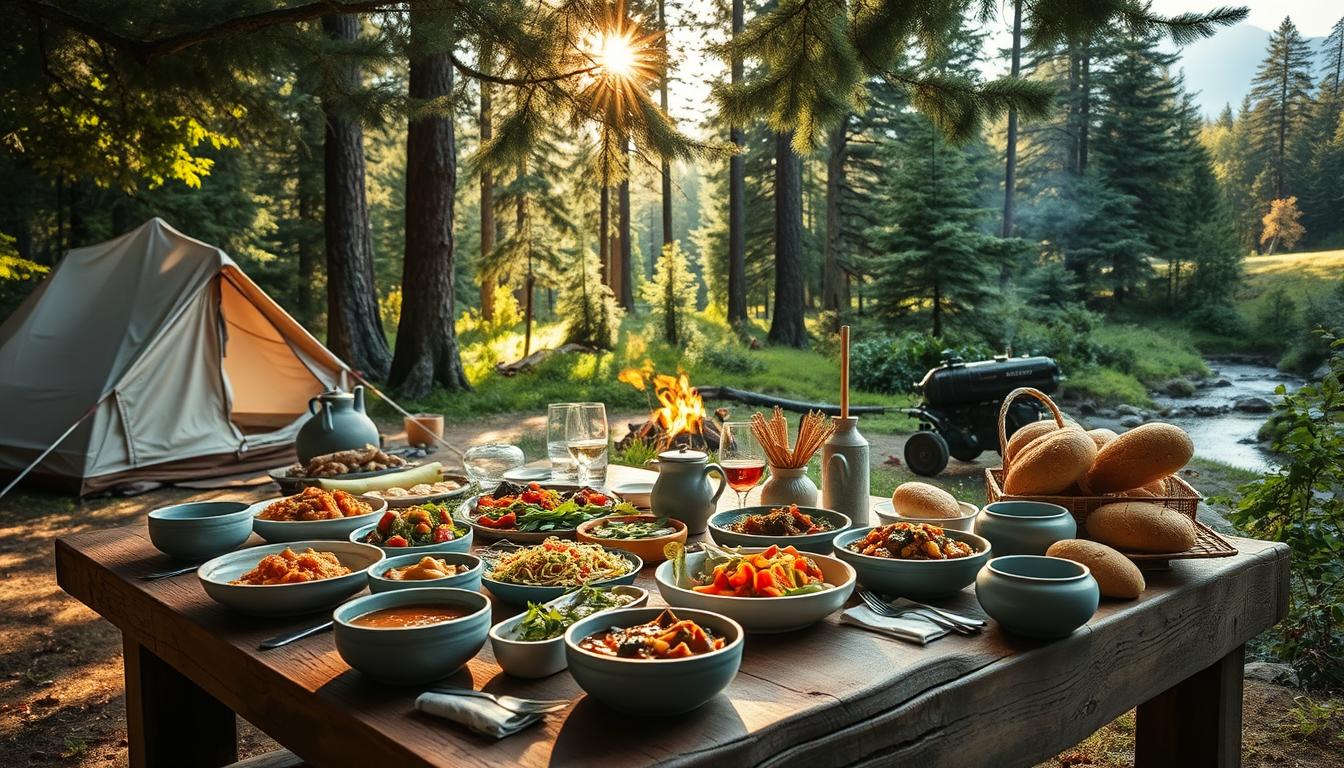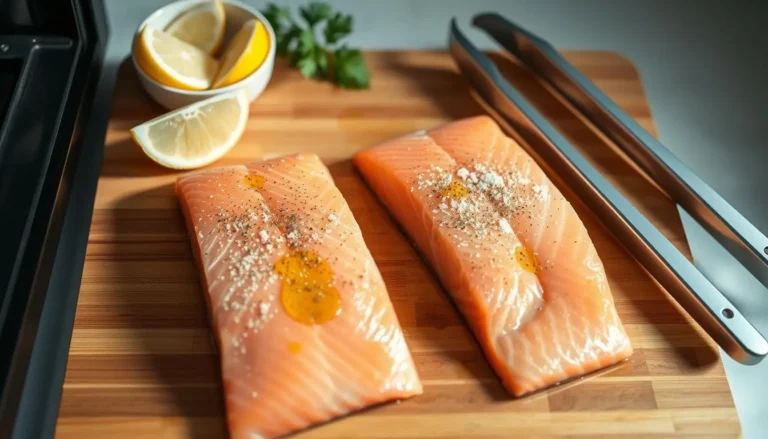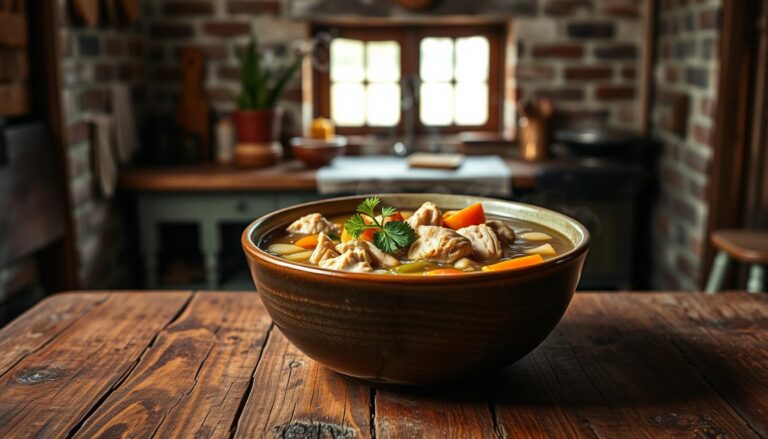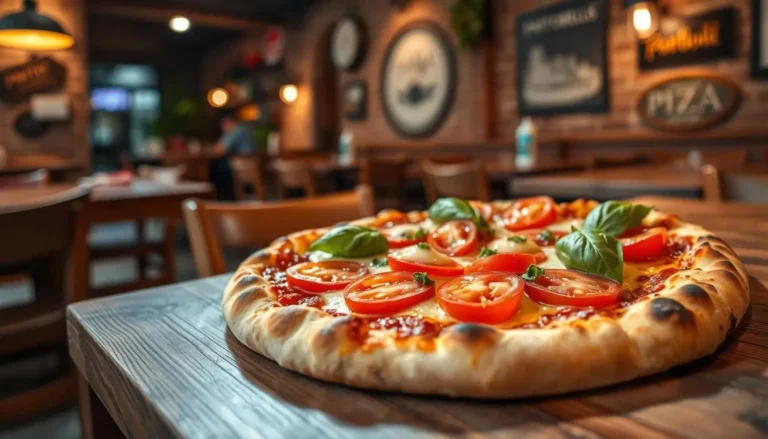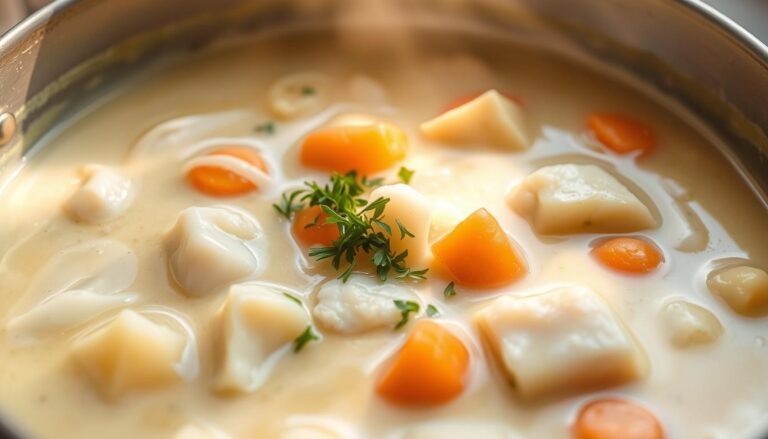Best Healthy Camping Meals for Your Outdoor Adventure
Table of Contents
Ever found yourself in the wilderness, feeling hungry and wondering what to eat? Camping meals have changed a lot. Now, there are many healthy options for those who love the outdoors and want to eat plant-based.
Planning your meals for camping is more than just finding food. It’s about making tasty dishes that give you energy. The Vegetarian Paleo Diet has made it easy for campers and hikers to find healthy, tasty food.
Knowing what you need to eat is key. Backpackers need 25-30 calories per pound of body weight for long hikes. For shorter trips, lighter foods are better. Companies like Farm to Summit use 32% « imperfect » produce, showing that healthy food can be sustainable.
Choosing the right food for camping can really enhance your trip. You can pick from light, easy-to-carry meals or rich, nutritious trail mixes. The Vegetarian Paleo Diet helps you find food that’s good for you and the planet. For more similar recipes, check out Our Flavors.
Understanding the Principles of the Paleo Diet
The Paleo diet is based on eating like our ancestors did. It goes back to the Paleolithic era, from 2.5 million years ago to 10,000 B.C. This diet focuses on whole, unprocessed foods that our hunter-gatherer ancestors ate.
The Paleo diet for vegetarians is all about eating nutrient-rich foods. It avoids modern processed foods. Your diet will focus on whole ingredients for better health and wellness.
Key Components of Paleolithic Nutrition
A vegetable-focused paleolithic diet includes several critical elements:
- Whole, unprocessed plant-based foods
- Organic fruits and vegetables
- Nuts and seeds
- High-quality plant proteins
- Elimination of refined sugars and grains
Benefits of Following a Paleo-Inspired Diet
Research shows many health benefits of a Paleo-inspired diet:
- Improved blood sugar control
- Reduced inflammation
- Potential weight loss support
- Enhanced nutritional intake
A meta-analysis found that a Paleo diet can lead to a 7.8-pound weight loss. This is over periods from two weeks to two years. The diet’s focus on high-protein foods, fruits, and vegetables, while avoiding processed foods, helps achieve these benefits.
The Paleo diet is not just a diet, but a lifestyle approach to nutrition that connects us with our ancestral eating patterns.
Adapting the Paleo Diet for Vegetarians
Switching to a vegan paleo diet needs careful planning and creative ways to eat. It challenges old ideas but keeps the main nutritional goals. You’ll learn about new protein sources and how to make balanced meals.
Vegetarian paleo followers can get protein from many plant-based foods:
- Nuts and seeds (almonds, chia, hemp)
- Organic tempeh and fermented soy products
- Pseudo-grains like quinoa and wild rice
- Plant-based protein powders (pea, hemp)
Identifying Plant-Based Protein Sources
Finding protein in a vegan paleo diet is key. Protein diversity is very important without animal products. Hemp seeds are a great choice because they have all the amino acids you need.
Incorporating Healthy Fats and Complex Carbohydrates
Your diet should focus on good fats and complex carbs. Avocados, coconut oil, and olive oil are great fats. Carbs from veggies and fruits help keep your energy up and your body nourished.
Remember: The key to a successful vegetarian paleo approach is variety and nutritional balance.
Essential Nutrients for Vegetarian Paleo Dieters
Following a grain-free vegan and Pegan diet means you must pay close attention to what you eat. Since you’re not eating animal products, you need to find other ways to get the nutrients your body needs. This helps keep you healthy and avoids nutritional gaps.
The Pegan diet is special because it mixes plant-based eating with paleo ideas. This mix requires careful planning to make sure you get all the nutrients your body needs.
Ensuring Adequate Vitamin B12 Intake
Vitamin B12 is very important when you don’t eat animal products. Here are some good sources:
- Nutritional yeast
- Fortified plant-based milk
- B12 supplements
- Algae-based supplements
Optimizing Iron and Zinc Absorption
To get the most out of minerals, you need to eat certain foods together. Here are some tips:
- Eat iron-rich foods with vitamin C
- Soak nuts and seeds to lower phytic acid
- Choose sprouted legumes
- Use cast-iron cookware to boost iron
With careful planning and the right supplements, your grain-free vegan diet can be complete and healthy.
Meal Planning for the Vegetarian Paleo Diet
Starting a Vegetarian Paleo Diet means planning meals carefully and getting creative with food. You’ll learn to make tasty, healthy meals that fit both vegetarian and paleo diets.
Good meal planning is crucial for a balanced Vegetarian Paleo Diet. Focus on whole foods that are full of nutrients. Stay away from processed foods.
Crafting Balanced Breakfast Options
Begin your day with meals that are high in protein and filling. Here are some great breakfast ideas:
- Banana pancakes made with eggs and shredded coconut
- Strawberry banana smoothie using coconut milk
- Golden turmeric scrambled eggs with baby spinach and avocado
- Chia seed pudding topped with fresh berries
Satisfying Lunch and Dinner Ideas
Your lunch and dinner should have a variety of plant-based proteins and healthy fats. Here’s a meal plan for your Vegetarian Paleo Diet:
| Meal Type | Recipe | Key Ingredients |
|---|---|---|
| Lunch | Kale Salad | Quinoa, mixed greens, avocado |
| Dinner | Zucchini Noodle Stir-Fry | Spiralized zucchini, mixed vegetables, coconut aminos |
| Snack | Almond Butter Energy Balls | Almonds, dates, chia seeds |
Adopting a flexitarian paleo diet lets you make meals that are both healthy and delicious. Prep ingredients ahead of time and try new recipes to keep your diet interesting and lasting.
Navigating Challenges of the Vegetarian Paleo Diet
Starting a plant-based paleo diet has its own set of challenges. You need to plan carefully and manage your nutrition well. Knowing these challenges helps you stick to a vegetarian paleo diet that’s good for your health and fits your lifestyle.
One big challenge is avoiding nutrient deficiencies. It’s important to choose your food wisely to get all the nutrients you need.
Addressing Potential Nutrient Deficiencies
Some nutrients need extra attention:
- Protein sources beyond animal products
- Iron and zinc absorption strategies
- Vitamin B12 supplementation
- Omega-3 fatty acid alternatives
Studies show that supplements can help fill nutritional gaps. For example, ancient diets often included a lot of plant-based foods. This shows that you can still eat flexibly.
Managing Social Situations and Dining Out
It can be tough to stick to your diet in social situations. But, you can prepare and communicate well. Here are some tips:
- Look up restaurant menus before you go
- Tell people about your diet
- Bring your own snacks
- Offer to make something for group meals
Being committed to a vegetarian paleo diet means making smart choices. But, it’s also about being open and informed.
| Nutrient Challenge | Vegetarian Paleo Solution |
|---|---|
| Protein | Nuts, seeds, plant proteins |
| Iron | Spinach, pumpkin seeds |
| Vitamin B12 | Supplements, fortified nutritional yeast |
| Calcium | Almond milk, leafy greens |
By understanding these challenges, you can create a strong plant-based paleo diet. It will meet your nutritional needs and stay true to your dietary values.
The Role of Supplements in the Vegetarian Paleo Diet
Following the vegan paleo diet means you need to think about getting enough nutrients. Supplements can help fill in the gaps in your diet. They make sure you get important nutrients that might be hard to find in plant-based foods alone.
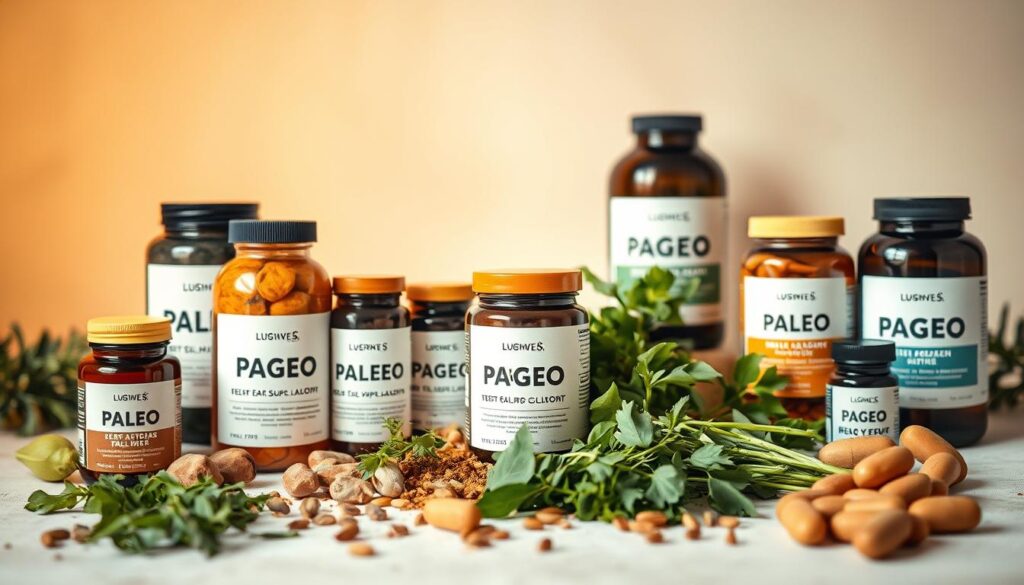
It’s important to pick the right supplements for your health. Your body needs certain nutrients that might not be in traditional vegetarian diets.
Essential Supplements for Nutritional Optimization
Here are some key supplements to think about for your vegan paleo diet:
- Vitamin B12: It’s vital for your brain and blood cells.
- Algae-based Omega-3: It’s good for your brain and heart.
- Plant-based Protein Powders: They help you get enough protein.
- Creatine: It boosts your muscle energy and brain function.
Selecting High-Quality Paleo-Friendly Supplements
When picking supplements, look for:
- Organic and non-GMO sources
- Third-party tested products
- Minimal processing
- Transparent ingredient lists
Remember, supplements should add to your diet, not replace it. Talking to a nutritionist can help you find the right supplements for your health needs.
Exercise and Lifestyle Considerations
Your journey on a vegetable-focused paleolithic diet is more than just food. It’s about living a flexitarian paleo lifestyle that includes exercise, managing stress, and recovering well.
When you follow a plant-based paleo diet, planning is key. Your diet and exercise should work together to keep you healthy and full of energy.
Maximizing Athletic Performance
Athletes on a vegetable-focused paleo diet need to focus on a few things:
- Eat high-quality plant proteins like pea and rice protein
- Make sure to get 80-180 grams of protein each day
- Keep your diet balanced with 15-20% fat, 20-30% protein, and 55-60% carbs
- Choose a variety of protein sources to get all amino acids
Stress Management and Recovery
Your flexitarian paleo lifestyle should also focus on being well-rounded. Good stress management includes:
- Regular meditation
- Keeping a consistent sleep schedule
- Practicing mindful movement
- Enjoying nature
By following these tips, you’ll find a balance that helps your body and mind thrive on a vegetable-focused paleo diet.
Success Stories and Case Studies
Real-life transformations can inspire and motivate those thinking about a Vegetarian Paleo Diet. At Whole Life Health, we’ve seen amazing changes in people who try this unique diet.

Inspiring Personal Transformations
Our research shows big health improvements for those on a grain-free vegan diet. The data shows this diet’s great potential.
« Switching to a Vegetarian Paleo Diet changed my entire perspective on nutrition and wellness. » – Sarah K., Nutritional Consultant
Key Insights from Successful Dieters
Our studies found important lessons for those on a Vegetarian Paleo Diet:
- Protein diversity is key for keeping muscle mass
- Meal planning is vital to avoid nutrient gaps
- Slowly changing your diet helps keep it up
- Supplements can fill nutritional gaps
Statistical Highlights
Our detailed study found:
- 3.2% of the U.S. population eats a vegetarian diet
- 80% of participants started for health reasons
- They lost 10-15 pounds on average in six months
The Vegetarian Paleo Diet is a flexible, nutrient-rich way to eat. It can be tailored to fit your needs and goals.
Sustainable and Ethical Considerations
Choosing a plant-based paleo diet is more than just about food. It’s a way to help the planet and make better food choices. Your diet can really make a difference for the environment.
The pegan diet is all about being kind to the planet while still getting the nutrients you need. Studies show that what we eat can have a big impact on the environment:
- Livestock generates 11.2% of global greenhouse gas emissions
- Vegan diets reduce greenhouse gases by 75%
- Plant-based nutrition can cut wildlife destruction by 66%
Sourcing Paleo-Friendly Plant-Based Foods
When picking ingredients for your plant-based paleo meals, focus on:
- Locally grown organic produce
- Sustainably sourced nuts and seeds
- Ethically cultivated legumes
« Every meal is an opportunity to vote for the kind of world you want to live in. » – Michael Pollan
Environmental Impact of the Vegetarian Paleo Diet
Your food choices can greatly lessen harm to the environment. By opting for plant-based paleo, you could cut CO2 emissions from food by up to 68% in 15 years. This not only helps your health but also fights climate change.
Helping local farmers, reducing food waste, and choosing eco-friendly ingredients are simple ways to eat better for the planet.
Conclusion: Embracing the Vegetarian Paleo Lifestyle
Your journey into the Vegetarian Paleo Diet shows a strong commitment to health and the environment. This diet combines plant-based nutrition with a paleo approach. It supports your well-being and helps protect the planet.
The vegetarian paleo diet has many benefits. It focuses on whole foods and healthy fats. This makes it great for those who care about their health and the planet.
This diet offers unique advantages. It has the right mix of protein and fats for your body. It also helps reduce harm to the environment. Studies show it could lead to big changes for our planet.
Success with this diet depends on making it your own. You might need to plan meals and consider supplements. But it’s about making choices that are good for you and the earth.
Long-Term Success and Health Benefits
Choosing this diet means you’re investing in your health. It helps with weight, metabolism, and disease prevention. The Vegetarian Paleo Diet is a flexible way to stay healthy and eco-friendly.
Resources for Continued Learning and Support
To keep learning and stay motivated, look for nutrition experts and online groups. There are many reliable sources on plant-based paleo nutrition. Your dedication to learning will help you succeed in this new way of eating.For more similar recipes, check out Camping Recipes with Few Ingredients.
FAQ
What exactly is a Vegetarian Paleo Diet?
A Vegetarian Paleo Diet combines the Paleo diet’s core principles with a plant-based approach. It focuses on whole, unprocessed foods like vegetables, fruits, nuts, seeds, and plant-based proteins. It excludes meat and follows Paleo guidelines by avoiding grains, legumes, and processed foods.
How can I get enough protein on a Vegetarian Paleo Diet?
You can get protein from plant-based sources like nuts, seeds, hemp protein, pea protein, and some legumes. Choose nutrient-dense options like almonds, chia seeds, pumpkin seeds, and spirulina to meet your protein needs.
What supplements are recommended for a Vegetarian Paleo Diet?
Essential supplements include vitamin B12, omega-3 fatty acids (algae-based), iron, zinc, and plant-based protein powders. These supplements help fill potential nutrient gaps in vegetarian and Paleo diets.
Are legumes allowed in a Vegetarian Paleo Diet?
Traditional Paleo diets don’t include legumes. But, some Vegetarian Paleo Diets (called Pegan) might include certain legumes as a protein source. They focus on nutrient-dense, minimally processed options.
How do I ensure I’m getting all necessary nutrients?
Focus on nutrient-dense foods and eat a variety of colorful vegetables. Include nuts and seeds, use high-quality supplements, and consider a nutritionist’s help. They should understand both vegetarian and Paleo principles to create a balanced meal plan.
Can I lose weight on a Vegetarian Paleo Diet?
Many people lose weight on this diet because it focuses on whole foods and eliminates processed items. It emphasizes nutrient-dense, low-calorie plant-based options. But, weight loss results vary based on calorie intake and metabolism.
Is the Vegetarian Paleo Diet environmentally friendly?
Yes, it’s more environmentally friendly. It focuses on plant-based foods, reduces animal product consumption, and promotes organic, locally sourced produce. This typically has a lower carbon footprint than traditional meat-based diets.
How challenging is it to follow a Vegetarian Paleo Diet?
It can be challenging at first, but it becomes easier with meal planning, creative recipes, and understanding nutritional needs. Many resources, cookbooks, and online communities support this diet.
Best Healthy Camping Meals for Your Outdoor Adventure
Camping is a fantastic way to connect with nature, and enjoying delicious, healthy meals makes the experience even better. Whether you’re hiking, fishing, or just relaxing by the fire, nutritious food will keep you energized. Here are some of the best healthy camping meals that are easy to prepare and packed with flavor.
1. Breakfast Scramble
Start your day with a protein-packed breakfast scramble. Simply cook eggs, diced bell peppers, onions, and spinach in a pan over the campfire or on a portable stove. Add some shredded cheese for extra flavor. Pair it with whole wheat toast for a complete meal.
2. Oatmeal with Nuts and Berries
For a quick and nutritious breakfast, prepare instant oats with hot water or milk. Top with fresh or dried berries, nuts, and a drizzle of honey for natural sweetness. Oatmeal provides lasting energy, making it perfect for a day of hiking.
3. Grilled Chicken and Vegetables
Marinate chicken breasts in olive oil, garlic, and herbs before your trip. Grill them over the campfire alongside zucchini, bell peppers, and mushrooms for a balanced meal rich in protein and vitamins.
4. Quinoa and Black Bean Salad
Quinoa is a great source of protein and fiber. Cook it ahead of time and mix it with black beans, corn, cherry tomatoes, and avocado. Drizzle with a lime-cilantro dressing for a refreshing and nutritious meal.
5. Foil Pack Salmon with Lemon and Asparagus
Wrap salmon fillets, asparagus, and lemon slices in aluminum foil and cook over the fire. This dish is rich in omega-3 fatty acids and requires minimal cleanup, making it perfect for camping.
6. Veggie and Hummus Wraps
For a light and refreshing meal, spread hummus on a whole wheat tortilla and fill it with cucumbers, carrots, spinach, and bell peppers. Roll it up and enjoy a crunchy, nutritious wrap.
7. Campfire Chili
Prepare a hearty chili using ground turkey, kidney beans, diced tomatoes, and chili spices. Cook it in a pot over the fire and serve with whole wheat bread for a satisfying meal that keeps you warm on chilly nights.
8. Grilled Sweet Potatoes
Slice sweet potatoes and grill them with a touch of olive oil, salt, and pepper. They make a delicious and healthy side dish packed with vitamins and fiber.
9. Trail Mix and Energy Bars
For quick snacks, bring homemade trail mix with nuts, seeds, dried fruits, and dark chocolate. Energy bars made with oats, peanut butter, and honey are also great for a boost during outdoor activities.
10. Banana and Peanut Butter Roll-Ups
Spread peanut butter on a whole wheat tortilla, place a banana inside, and roll it up. Slice into bite-sized pieces for a tasty and energy-rich snack.
Tips for Healthy Camping Meals
- Plan and prep ingredients before your trip to save time.
- Use a cooler with ice packs to keep perishable foods fresh.
- Opt for whole, unprocessed ingredients for better nutrition.
- Stay hydrated by bringing plenty of water and herbal teas.
With these healthy and easy camping meals, you’ll stay energized and enjoy delicious food while exploring the great outdoors. Prepare ahead, pack wisely, and make the most of your adventure with nutritious meals that fuel your body and mind.

